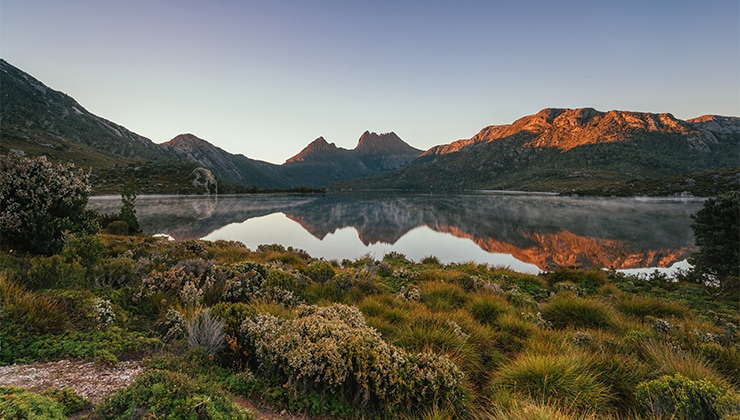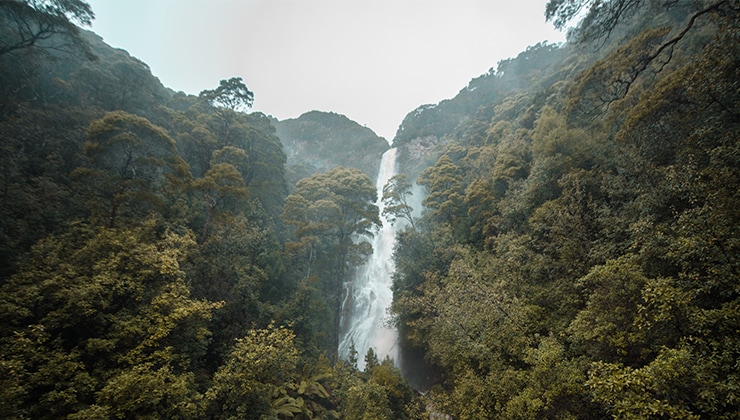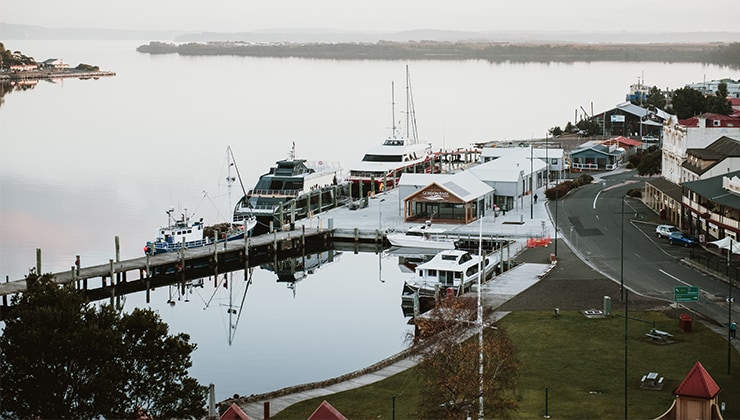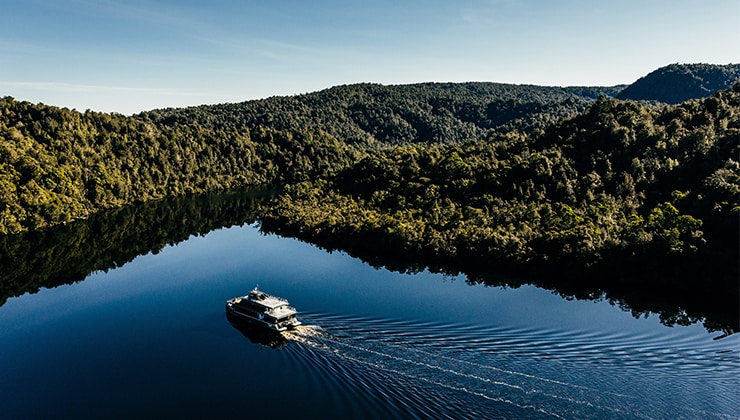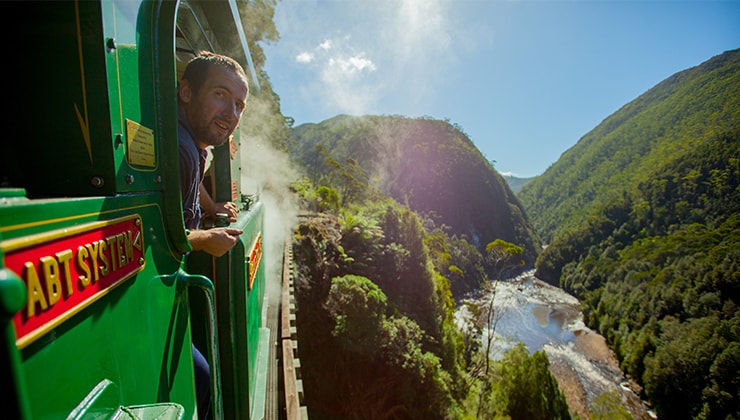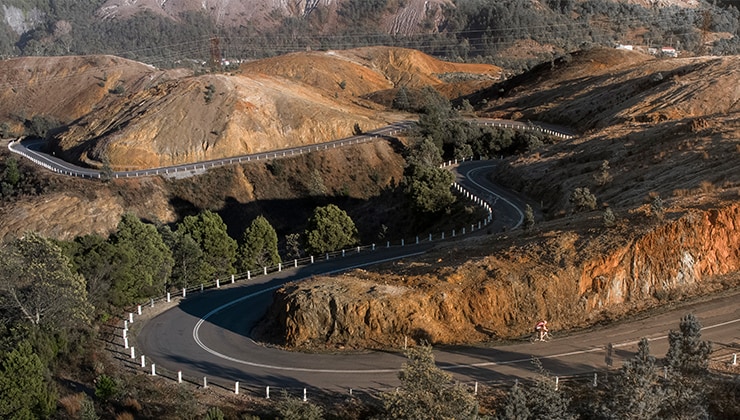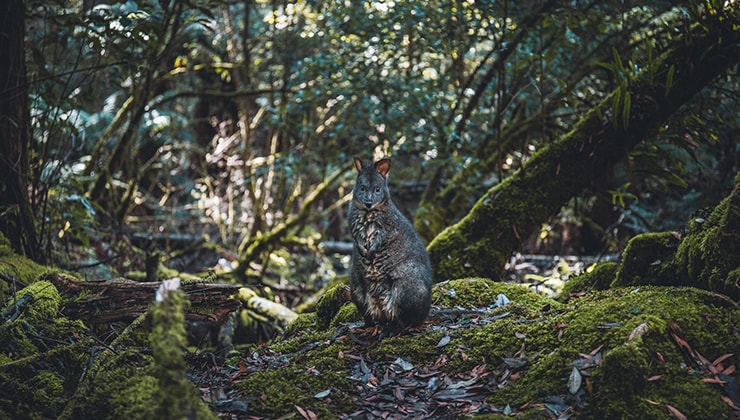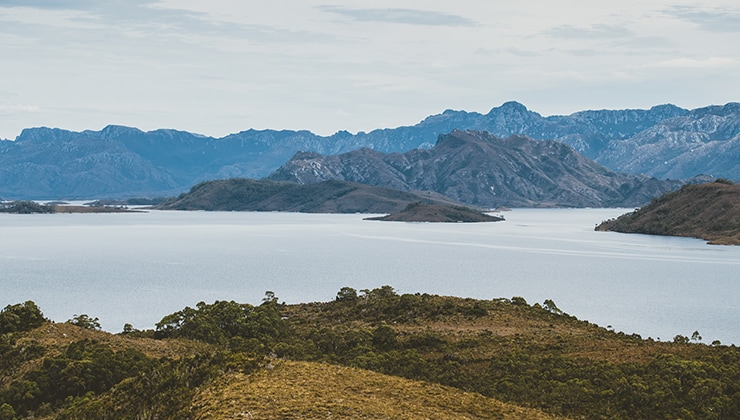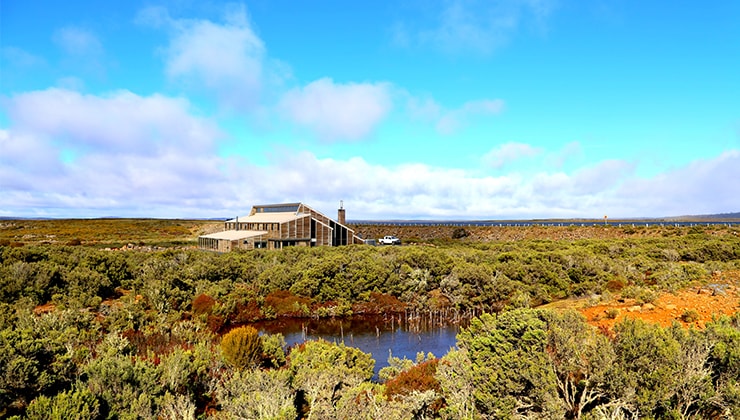The road out of Queenstown is full of twists and turns, so take it slowly. At the top of the spectacular “99 Bends” above town, marvel at the Iron Blow Lookout and follow the mountainside boardwalk to Horsetail Falls.
Past Lake Burbury, stop for the easy 20-minute return walk through mossy forest of sassafras, myrtle and ferns to reach the beautiful Nelson Falls.
Lake St Clair is Australia's deepest freshwater lake, and offers an abundance of activities amid nature. Choose wilderness walks ranging from a leisurely 45 minutes to challenging overnight trips. Explore the lake’s shores and dense forests of ancient pines with dramatic mountain backdrops, and spot wildlife including wombats, echidnas and platypus.
At Derwent Bridge visit the ambitious art installation The Wall in the Wilderness, where 100 metres of carved Huon-pine panels depict the pioneering stories that helped shape the Central Highlands.
Stop in at the old hydro town of Tarraleah, built in the 1930s by the Hydro Electric Commission. Workers from all across the world came here to help with the construction of Tasmania’s hydro system, and the scale of this project is visible in the massive steel water pipes running down the mountainside.
In the Derwent Valley, whisky lovers can pause for cellar-door tastings at Lawrenny Estate Distillery in Ouse, while beer lovers can taste wild-fermented brews at the friendly farm bar of Two Metre Tall Farmhouse Ale & Cider.
Stay overnight in New Norfolk, which features historical buildings and some of the island’s best antique shopping. Treasure hunters are spoilt for choice here: Drill Hall Emporium, Willow Court Antique Centre and Ring Road Antique Centre are just a few of the must-see antique boutiques.
Explore this peaceful town on foot, while soaking up views of the snaking River Derwent and surrounding mountains.



